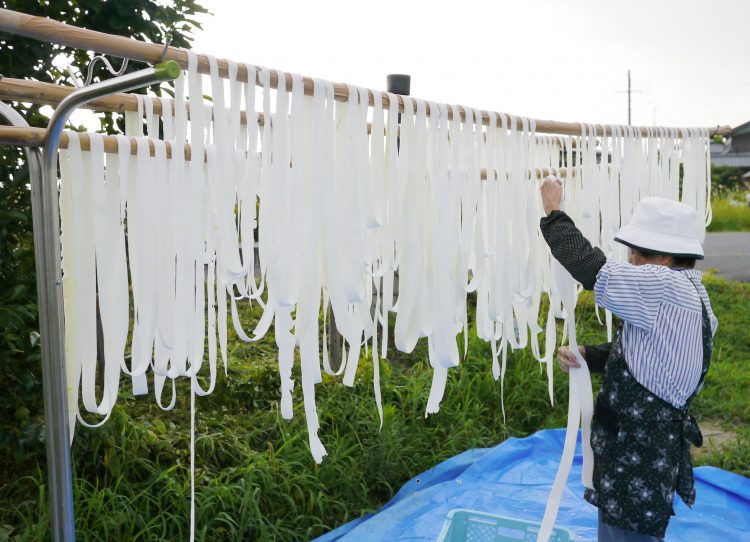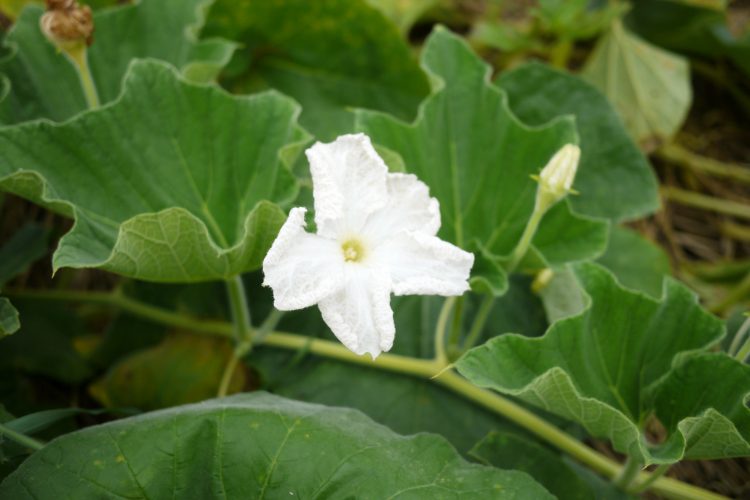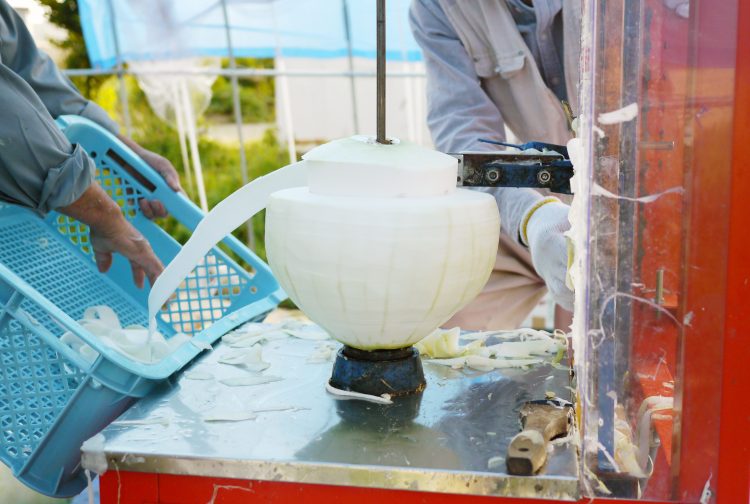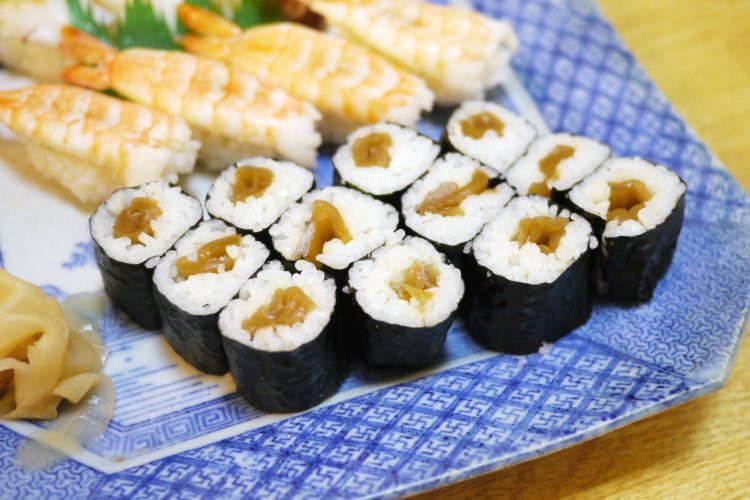Minakuchi Kanpyo: Japanese Gourd Strips from Shiga
Jul 22,2020
Minakuchi Kanpyo: Japanese Gourd Strips from Shiga
Jul 22,2020
In this irregular series, food culture researcher Kiyoshi Aya describes the local delicacies and ways of life she has encountered in different places throughout Japan.
Minakuchi is a former town located in the Koka district of Shiga. In an Edo period (1603 to 1868) ukiyo-e work by Utagawa Hiroshige of the Minakuchi-juku station — one in his series Fifty-three Stations of the Tokaido, the artist vividly depicts women cutting yugao [bottle gourd] fruit into round slices and hanging the curly pieces of kanpyo [dried gourd shavings] on poles. In this piece, Kiyoshi talks about the unique kanpyo of Minakuchi.

“Tochigi is well-known as a producer of kanpyo, but Minakuchi has also been making kanpyo for centuries. According to some stories, Tochigi’s kanpyo originally came from Minakuchi.”
The peak of kanpyo production runs from the end of the rainy season [mid-July] until the Bon Festival [mid-August]. Kiyoshi finds it gratifying to watch the large yugao fruit skillfully being peeled into thin, long strips of kanpyo, as if being shaved with a hand plane.


Yugao plants produce large white flowers, and yugao fruit can grow to be as large as 30 centimeters in diameter.
The number of kanpyo producers in Minakuchi has fallen drastically, but they distinguish themselves by following the tried-and-true production method of unbleached sun-drying to this day.
“After the kanpyo fruit are harvested and peeled with a special machine, they are immediately hung on poles, ensuring that they do not overlap, and then dried in the sun for one and a half days. Before drying, the strips are about three millimeters thick and three centimeters wide, but by the time they are taken in, they have shrunk to one millimeter thick and one centimeter wide, becoming finished kanpyo.”

A single fruit can produce five strips of kanpyo, each about five meters long
Mainstream kanpyo producers, in the interest of efficiency, bleach their produce white and dry it with machines. In contrast, Minakuchi producers continue to use the traditional method, even though it is time and labor intensive, because they want to preserve kanpyo-making as part of their food culture.
“The number of traditional vegetables and producers using traditional methods are on the decline nationwide. But movements have arisen in recent years striving to preserve traditional vegetables and production methods as part of regional cultures, by forming preservation societies and enlisting support from local governments. Even if on a small scale, I feel producing traditional vegetables while having fun is worth doing as a community and the idea of preserving these things as culture is a very valuable one.”
Kiyoshi says the fact that sushi made with kanpyo is a staple at local shrine festivals in the Minakuchi area may have helped pass on this cultural heritage.
“Ukawa-zushi is a type of pressed sushi with kanpyo as the main ingredient. It is a delicacy eaten at festivals at the Ukawa Tenmangu shrine in the Ukawa district of Minakuchi. Ukawa-zushi continues to be made today, and locally produced kanpyo is a must. Traditional vegetables and traditional production methods require a lot of labor. When they are linked to local food events however, local people feel a strong desire to preserve and protect these tastes, and I think this sparks the zeal to continue to produce them.”

Thin rolls of kanpyo are a staple in the Kanto region, and Ukawa-zushi, a type of pressed sushi, is a festival delicacy in the Ukawa district
Freshly dried kanpyo are bundled and sold at highway service centers and other locations.
“When you bite into freshly dried kanpyo, the concentrated sweetness tastes so rich you don’t need to reconstitute it to eat it. As an ingredient, kanpyo is most commonly used to make sushi rolls and chirashi-zushi [sushi toppings served on a bowl of sushi rice], but it can be used in a variety of other dishes, such as simmered dishes in seasoned broths, soup ingredients, and stir-fried dishes. Kanpyo wrapped in egg is also apparently eaten regularly in the area.”
There are other dishes unique to the area of production, according to Kiyoshi.

This dish combines kanpyo and yugao wata [gourd innards], which allows you to enjoy the contrast of textures of the moderately chewy kanpyo and the soft wata
“Locals are acquainted with dishes that use the wata [gourd innards] portion left after peeling off the kanpyo as an ingredient in stews and miso soup. I was surprised by its melt-in-your-mouth texture when I tried it. A dish that combined the moderately chewy kanpyo with the soft wata was so delicious that I felt I had discovered a whole new attraction to kanpyo.”
Kanpyo-making has been a seasonal tradition and essential local flavor since the Edo period. We hope these scenes and these flavors will be handed down for as long as possible.

food culture researcher
food culture researcher
food culture researcher and Secretary of the Research Division at the National Council for Washoku Culture
Born in Osaka prefecture, Kiyoshi is involved in researching traditional regional Japanese cuisine and the dietary habits in fishing and farming communities as well as writing and giving lectures about local foods.
Recent publications include Washoku Techo [Washoku Handbook] (co-author, published by Shibunkaku), Furusato no Tabemono [Hometown Food] (Washoku Culture Booklet No. 8) (co-author, published by Shibunkaku), and Shoku no Chizu [Maps of Food], Third Edition (published by Teikoku-Shoin).